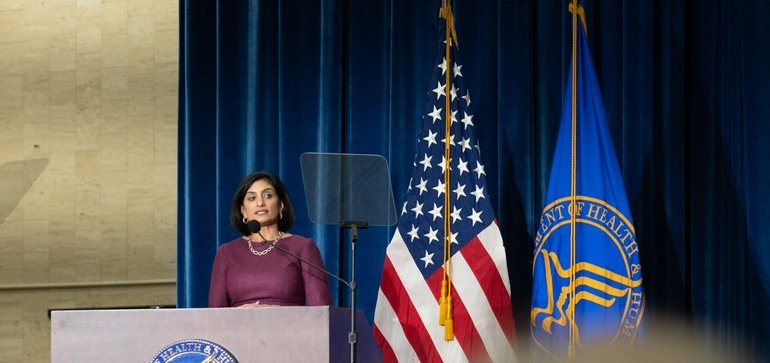
Dive Brief:
- CMS is finalizing a price transparency push that uses median payer-specific negotiated charges from Medicare Advantage organizations to inform its calculations for inpatient hospital rates beginning in 2024, according to a final rule posted Wednesday.
- The Inpatient Prospective Payment System rule for 2021 includes a rate increase of 2.9% for general acute care hospitals.
- Other changes include the addition of 24 technologies to receive add-on payments, and finalizing a diagnosis-related group for CAR-T cancer therapies. CMS expects Medicare spending on new technology add-on payments to increase 120% year-over-year.
Dive Insight:
Hospitals have fought CMS’ push for price transparency since it began, though the agency is moving forward with its plan, including some additional tweaks, according to the final rule.
When the draft rule was released earlier this year, the American Hospital Association didn’t mince words.
“The disclosure of privately negotiated rates will not further CMS’s goal of paying market rates that reflect the cost of delivering care,” AHA said. “These rates take into account any number of unique circumstances between a private payer and a hospital and simply are not relevant for fixing Fee-for-Service Medicare reimbursement.”
CMS is confirming its plan to collect data on hospital median payer-specific negotiated charges and use that information to set relative Medicare payment rates, in line with its draft rules, released in May.
“These provisions will introduce the influences of market competition into hospital payment and help advance CMS’s goal of utilizing market-based pricing strategies in the Medicare FFS program,” the agency said in a statement.
AHA, which sued the agency in December 2019, has been fiercely opposed to attempts to force payers and providers to pull back the curtain on secret, negotiated rates. In its lawsuit from 2019, the hospital lobby, along with other industry groups, alleged that revealing rates will only leave patients confused, chill competition and overwhelm hospitals.
AHA also argued in a U.S. District Court for the District of Columbia in May that the rule exceeded the government’s authority and violated the First Amendment by compelling hospitals to publicly post confidential and proprietary information.
In a blow to hospitals, a judge ruled in favor of HHS and the price transparency rule in June, which takes effect beginning Jan. 1. AHA appealed several days later.
It’s unclear whether an appellate court ruling will come down before the rule is set to go into effect.
The IPPS also outlines uncompensated care payments to disproportionate share hospitals for FY 2021. CMS will distribute roughly $ 8.3 billion in uncompensated care payments in 2021, compared with $ 7.8 billion it expected in the draft rules. However, that’s still about $ 60 million less than it distributed for those payments in 2020.
CMS also proposed expanding the pathway for antimicrobial products that FDA has designated as a Qualified Infectious Disease Product to include products approved under FDA’s Limited Population Pathway for Antibacterial and Antifungal Drugs.
